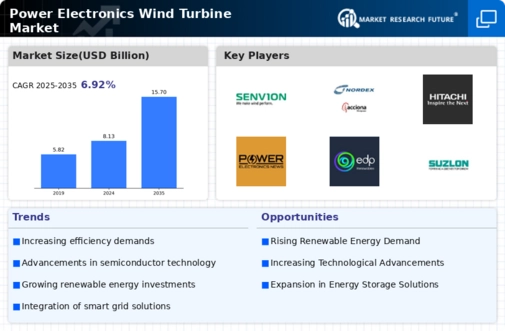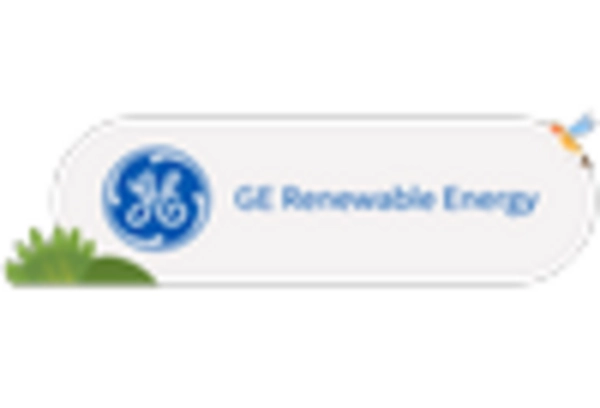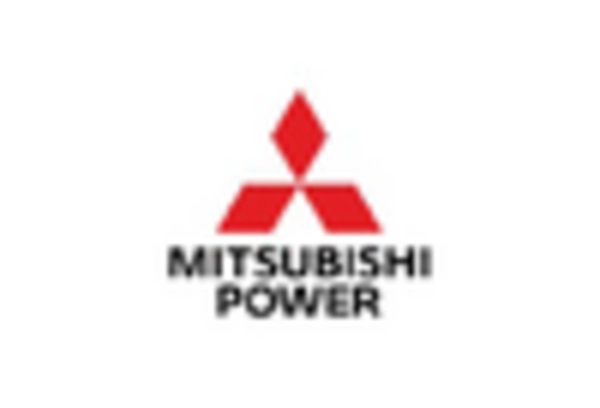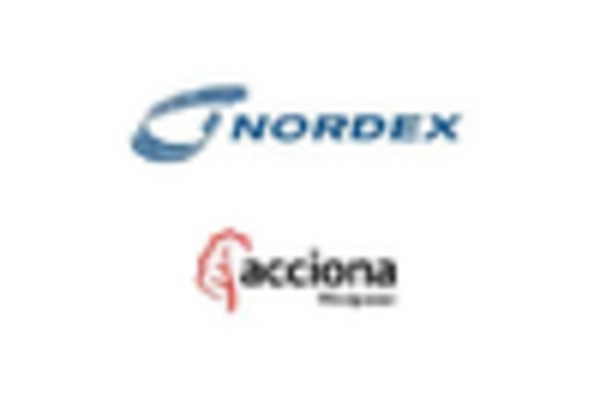Growing Demand for Renewable Energy
The Power Electronics Wind Turbine Market is propelled by the escalating demand for renewable energy solutions. As concerns regarding climate change and energy security intensify, there is a marked shift towards sustainable energy sources. Wind energy, being one of the most viable options, is witnessing increased investments. Recent statistics indicate that wind energy capacity has grown by over 20% annually in several regions, highlighting the urgency to adopt cleaner energy technologies. The integration of advanced power electronics in wind turbines enhances their efficiency, making them more attractive to investors and energy producers. This growing demand for renewable energy is expected to further bolster the Power Electronics Wind Turbine Market.
Regulatory Framework and Incentives
The Power Electronics Wind Turbine Market is significantly influenced by supportive regulatory frameworks and incentives established by various governments. Policies aimed at promoting renewable energy sources, such as feed-in tariffs and tax credits, create a favorable environment for investment in wind energy projects. For instance, recent legislation in several regions has mandated a certain percentage of energy to be sourced from renewable technologies, which directly benefits the wind turbine sector. This regulatory support not only encourages the deployment of advanced power electronics but also stimulates market growth. As a result, the Power Electronics Wind Turbine Market is likely to see increased investments and project developments in the coming years.
Increased Investment in Infrastructure
The Power Electronics Wind Turbine Market is witnessing a surge in investment aimed at enhancing infrastructure for wind energy generation. Governments and private entities are channeling funds into the development of wind farms and associated power electronics systems. This investment is crucial for improving grid connectivity and ensuring that wind energy can be efficiently transmitted to consumers. Recent reports indicate that infrastructure investments in renewable energy are expected to reach unprecedented levels, with billions allocated to upgrade existing facilities and build new ones. This influx of capital is likely to stimulate growth in the Power Electronics Wind Turbine Market, facilitating the deployment of advanced technologies and expanding the overall capacity of wind energy systems.
Cost Reduction in Wind Energy Production
The Power Electronics Wind Turbine Market is benefiting from significant cost reductions in wind energy production. Advances in manufacturing processes and economies of scale have led to lower costs for wind turbine components, including power electronics. Recent analyses suggest that the levelized cost of energy (LCOE) for wind energy has decreased by approximately 40% over the past decade, making it one of the most cost-effective energy sources available. This trend is likely to continue as technology improves and production scales up. Consequently, the Power Electronics Wind Turbine Market is poised for growth as more projects become financially viable, attracting further investment and development.
Technological Innovations in Power Electronics
The Power Electronics Wind Turbine Market is experiencing a surge in technological innovations that enhance the efficiency and reliability of wind energy systems. Advanced power electronic converters, such as multi-level converters and matrix converters, are being integrated into wind turbines to optimize energy conversion processes. These innovations not only improve the overall performance of wind turbines but also reduce maintenance costs. According to recent data, the adoption of these technologies could lead to a 10-15% increase in energy output, making wind energy more competitive against traditional energy sources. As the industry evolves, the continuous development of smart grid technologies further supports the integration of renewable energy, thereby driving growth in the Power Electronics Wind Turbine Market.


















Leave a Comment